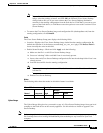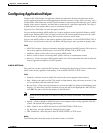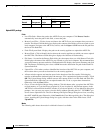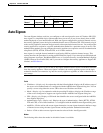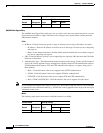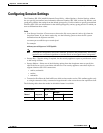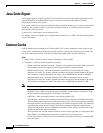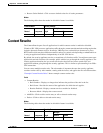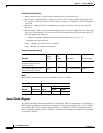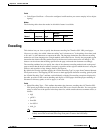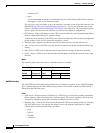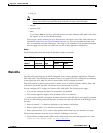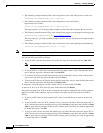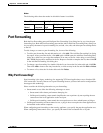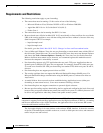
38-13
Cisco ASDM User Guide
OL-16647-01
Chapter 38 Clientless SSL VPN
Content Rewrite
• Restore Cache Default—Click to restore default values for all cache parameters.
Modes
The following table shows the modes in which this feature is available:
Content Rewrite
The Content Rewrite pane lists all applications for which content rewrite is enabled or disabled.
Clientless SSL VPN processes application traffic through a content transformation/rewriting engine that
includes advanced elements such as JavaScript, VBScript, Java, and multi-byte characters to proxy
HTTP traffic which may have different semantics and access control rules depending on whether the user
is using an application within or independently of an SSL VPN device.
By default, the security appliance rewrites, or transforms, all clientless traffic. You might not want some
applications and web resources (for example, public websites) to go through the security appliance. The
security appliance therefore lets you create rewrite rules that let users browse certain sites and
applications without going through the security appliance. This is similar to split-tunneling in an IPSec
VPN connection.
You can create multiple rewrite rules. The rule number is important because the security appliance
searches rewrite rules by order number, starting with the lowest, and applies the first rule that matches.
“Example Content Rewrite Rules” shows example content rewrite rules.
Fields
• Content Rewrite
–
Rule Number—Displays an integer that indicates the position of the rule in the list.
–
Rule Name—Provides the name of the application for which the rule applies.
–
Rewrite Enabled—Displays content rewrite as enabled or disabled.
–
Resource Mask—Displays the resource mask.
• Add/Edit—Click to add a rewrite entry or edit a selected rewrite entry.
• Delete—Click to delete a selected rewrite entry.
Modes
The following table shows the modes in which this feature is available:
Firewall Mode Security Context
Routed Transparent Single
Multiple
Context System
• — • ——
Firewall Mode Security Context
Routed Transparent Single
Multiple
Context System
• — • ——



